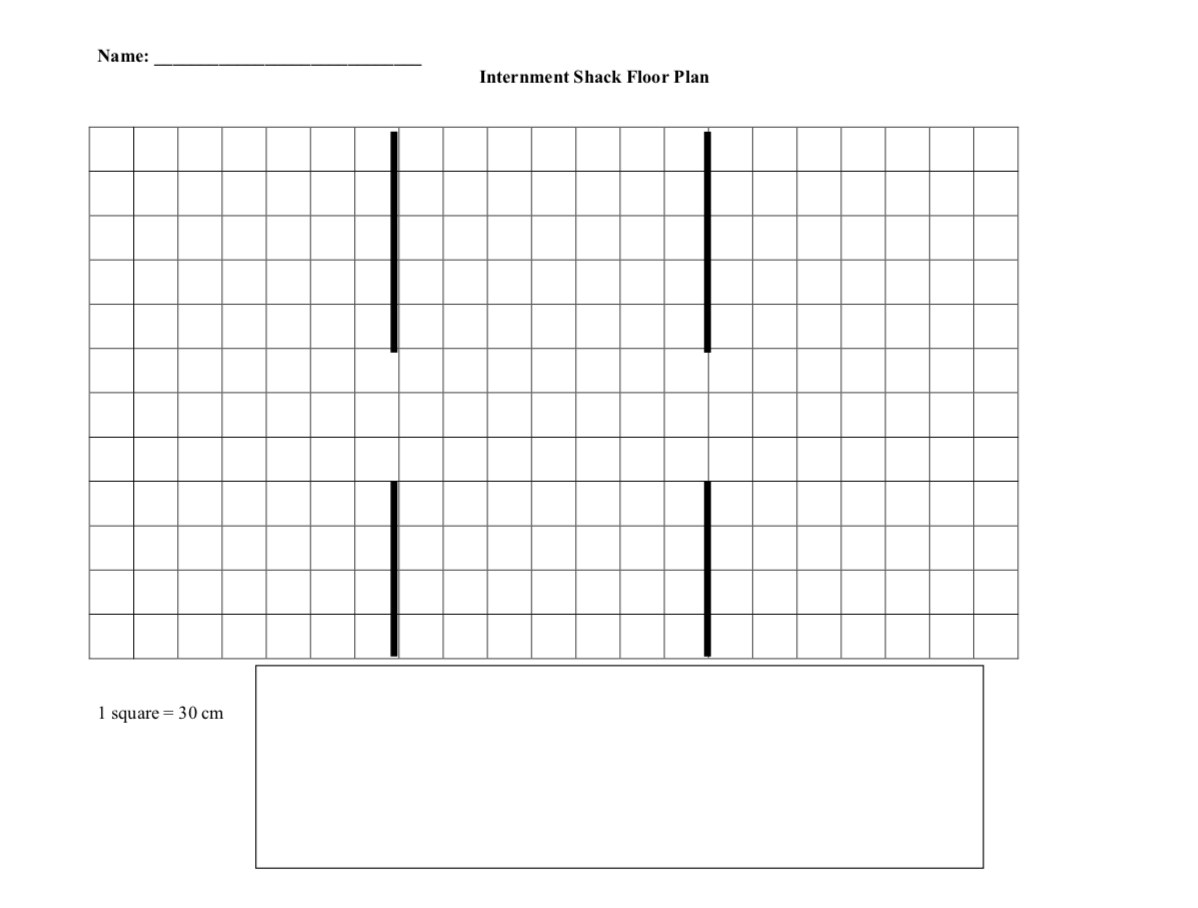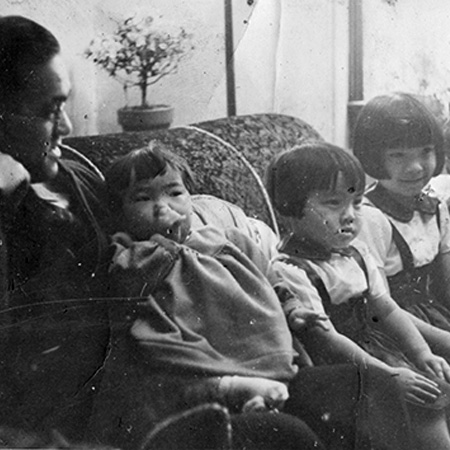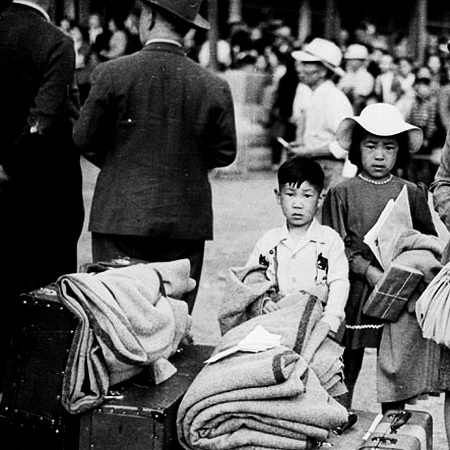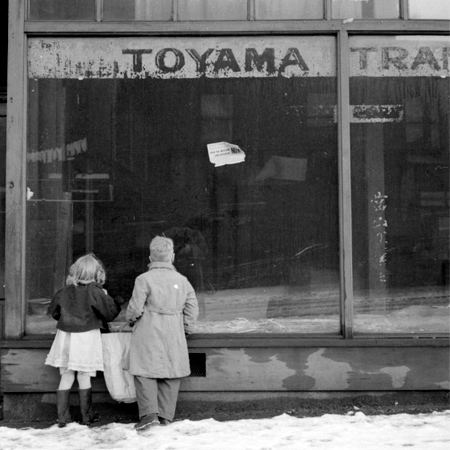
Lesson 5: Living in Internment Camps
Students simulate the cramped and crowded living conditions of internees by trying to fit their own belongings in a floor plan of an internment shack. They also examine various primary and secondary sources to learn about life during internment.
- On the classroom floor, draw a box using masking tape or chalk. The box should be about 4 metres by 7 metres. Ask 12 students to stand in this space, or even lie down. Explain that it seems like a big space, but during the war, two Japanese Canadian families (of approximately six people each along with their belongings) would have to share this space in an internment camp. The shack was 14 x 24 feet (4.3 metres by 7.3 metres).
- Students draw a box on a piece of graph paper that represents the floor plan of an internment shack, (or use the internment shack floor plan grid). Dimensions could be about 4 metres by 7 metres, and using cm graph paper, each cm square = about 30 cm (if each cm is about 1 ft, then your shack would be 14 x 24 squares big). All the belongings of 12 people had to fit here.
- Students show how they would organize this space for:
- sleeping: beds and bedding
- doing schoolwork: pencils, paper, books, etc.
- doing daily chores: sewing, laundry and cleaning supplies, etc.
- clothing and cooking items
- Ask students: Did you have any difficulty fitting your belongings in this space? What problems would you and members of your family encounter in your daily life?
- Show Photos again focusing on the ones of life in internment (Part 2. 1945 to 1949: Living in Internment). Divide students into groups.
-
Tell them to work together to answer these questions. Each group should have a recorder and a reporter who will share their answers with the class later. Remind students of the 5Ws.
- Some possible questions: How much of their belongings were they allowed to take? What would they have to leave behind? (pets?) What would be missing from their daily life? There were no barbed wire fences around the camp. Why didn't Japanese Canadians just leave? Who do you think built the camp? Who were the teachers? Who provided medical care? How did they get food? clothes? toys? water? What do you wonder about?
- Discuss. (See suggested questions in Assessment Considerations).
- Students complete journal reflection. (See suggested journal reflection prompts in Assessment Considerations).
SUGGESTED DISCUSSION QUESTIONS
- Discuss how students are feeling about what is happening to Japanese Canadians? Do they understand that internment is not happening to non-Japanese Canadians? Does it change the students' views that this treatment is only happening to one group of people?
- What is my idea of fair (now)? Has it changed now that my life is different in the simulation (my rights and possessions have been removed)?
- What is important to me? What do I value? What the Japanese Canadians did to make life as normal as possible tells what they valued most in life.
SUGGESTED JOURNAL REFLECTION PROMPTS
- What is my idea of fair (now)? Has it changed now that my life is different (my rights and possessions have been removed)?
- What is important to me? What do I value? What the Japanese Canadians did to make life as normal as possible tells what they valued most in life.
- What was it like to lose your home, your possessions, and your community due to prejudice? How do you deal with this kind of loss?
SUGGESTED TASK
- Internment Shack Floor Plan
ALTERNATIVE SUGGESTED TASKS
- Write a diary entry describing the life of a Japanese Canadian in internment camp. Students may write as any family member.
- Write a diary from the viewpoint of a teacher, an RCMP officer, or any other person who would be part of the internment camp.
- Write a letter to a former classmate or friend describing the differences between living in your old home and living in the camp.
Internees used in Work Camps
There is some excellent information here about how Japanese Canadian men were used in work camps to build highways. The information was produced by the BC government, Ministry of Transportation and Infrastructure, and community partners.
Children's Human Rights
Students look at UNICEF's Convention on the Rights of the Child to determine which children's rights were denied to Japanese Canadian children in internment camps. Remind students that these rights were established after WWII. Students could describe a situation where children are denied one of the basic children's rights.
Locations of Internment Camps
Students plot on a map of BC where the internment camps were located. Students also look at climate data to see how the weather compared to Japanese Canadians' homes on the coast.
Demographics
Students look at demographic data to create graphs to compare the population of Japanese Canadians in different provinces over time. They notice how the population of Japanese Canadians changes drastically over the war years.









